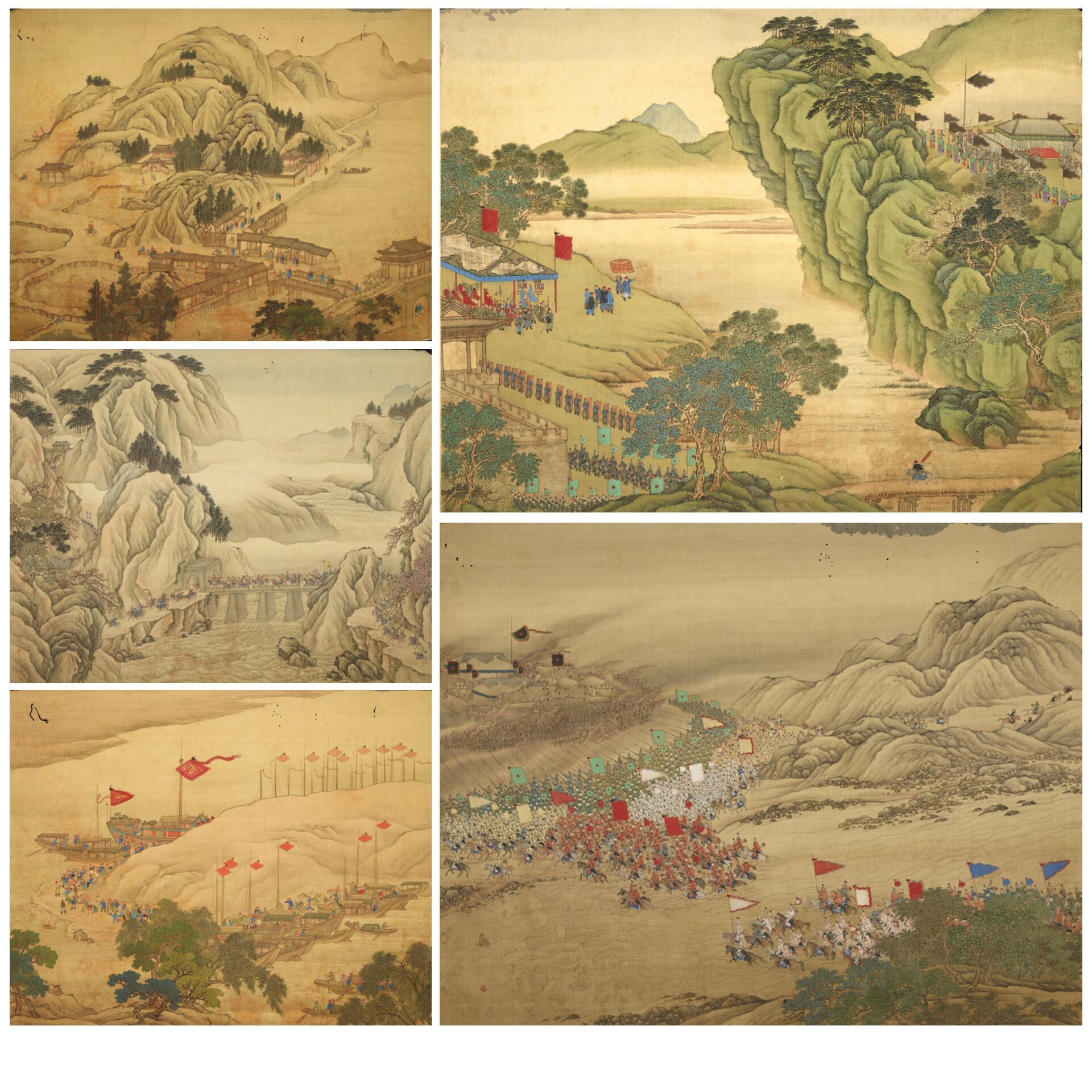Description
China, late 17th/early 18th century, Set comprising five inks and colors on silk in the Gong-Bi style, depicting military scenes, one of which may illustrate the eight banners, a system of military and civilian units for military operations and hunting established by Nurhachi (May 14, 1559 - September 30, 1626), the Great Ancestor of the Qing dynasty, architectural views including one of the main passages of the Great Wall of China, located in Hebei province and a fishing port. A small red stamp in the lower left or right of each painting is said to belong to Wang Yun, an artist at the imperial court under Emperor Kangxi (1661-1722) and Emperor Yongzheng (1722-1735). Wear, stains and wormholes. Dim. 53.3 x 67 cm ; 53.9 x 68.5 cm ; 54 x 68 cm ; 53 x 67.5 cm ; 54.5 x 68.3 cm The gong bi style allows meticulous contour and color work, long reserved for the imperial court. Wang Yun would have used this technique in his depictions of figures and buildings. His style is similar to that of one of the great masters of the Ming dynasty, Ch'iu Ying (circa 1490-1552). A painting by Wang Yun is kept at the National Palace Museum in Taiwan. Additional High Definition photographs on request. Registration and €10,000 deposit required prior to sale.
1
China, late 17th/early 18th century, Set comprising five inks and colors on silk in the Gong-Bi style, depicting military scenes, one of which may illustrate the eight banners, a system of military and civilian units for military operations and hunting established by Nurhachi (May 14, 1559 - September 30, 1626), the Great Ancestor of the Qing dynasty, architectural views including one of the main passages of the Great Wall of China, located in Hebei province and a fishing port. A small red stamp in the lower left or right of each painting is said to belong to Wang Yun, an artist at the imperial court under Emperor Kangxi (1661-1722) and Emperor Yongzheng (1722-1735). Wear, stains and wormholes. Dim. 53.3 x 67 cm ; 53.9 x 68.5 cm ; 54 x 68 cm ; 53 x 67.5 cm ; 54.5 x 68.3 cm The gong bi style allows meticulous contour and color work, long reserved for the imperial court. Wang Yun would have used this technique in his depictions of figures and buildings. His style is similar to that of one of the great masters of the Ming dynasty, Ch'iu Ying (circa 1490-1552). A painting by Wang Yun is kept at the National Palace Museum in Taiwan. Additional High Definition photographs on request. Registration and €10,000 deposit required prior to sale.
